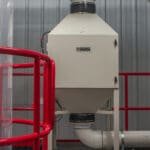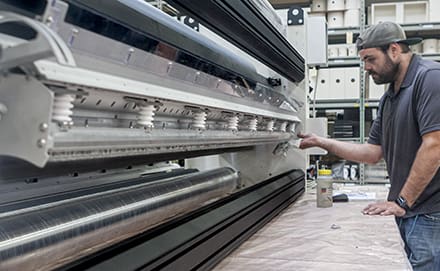Watt Density Calculator
Determine the watt density to run your line on
We get the question all the time, "How do you calculate watt density?" So we've created an easy to use online calculator.
The ultimate goal of any surface treatment system is to increase surface tension measured in dynes which then increases the wettability and adhesion characteristics of the surface. This allows you to add value to the substrate through printing, laminating, coating etc.
Corona treating systems achieve this by applying a given level of power over a certain period of time to the surface. This power/time parameter is measured in watt density.
The formula to calculate watt density is:
Power Supply Output (watts)
Electrode Width (ft) * Line Speed(ft/min) * Number of Treat Sides
Sample calculation with Power Supply Output: 5000 watts (5kW), Electrode Width: 5 ft, Line Speed: 500 ft/min, Number of Treat Sides: 1. Watt Density = 2.
Common Questions Regarding Watt Density
Does applying more watt density always produce better adhesion results?
In general a higher watt density will produce a higher dyne level (measurement of surface energy). However dyne levels do not guarantee adhesion and at some point continually increasing the watt density will eventually lead to over treatment and/or create other operational problems. It is also important to note that the relationship between increased watt density and dyne levels is no linear.
If my line speed varies how can I be sure I am applying the same amount of surface treatment to the substrate?
Most power supplies are set-up to operate on a constant kW output. As you can see from the watt density formula above if you apply constant power over different line speeds your applied watt density will be different. Most converters who have lines that ramp up and down will incorporate watt density control. For more information on this feature please contact us.
| Power Supply Output (Watts) | ||
| Electrode Width | ||
| Line Speed | ||
| Number of Treat Sides | ||
| Watt Density | Watts / ft2 / minute | Watts / m2 / minute |
Having problems with the Watt Density Calculator? Enter all numbers as whole numbers or decimal digits if necessary, and make sure the Electrode Width and Line Speed are noted in the same units (feet and feet, or meters and meters, not feet and meters). Any other problems contact us.

















